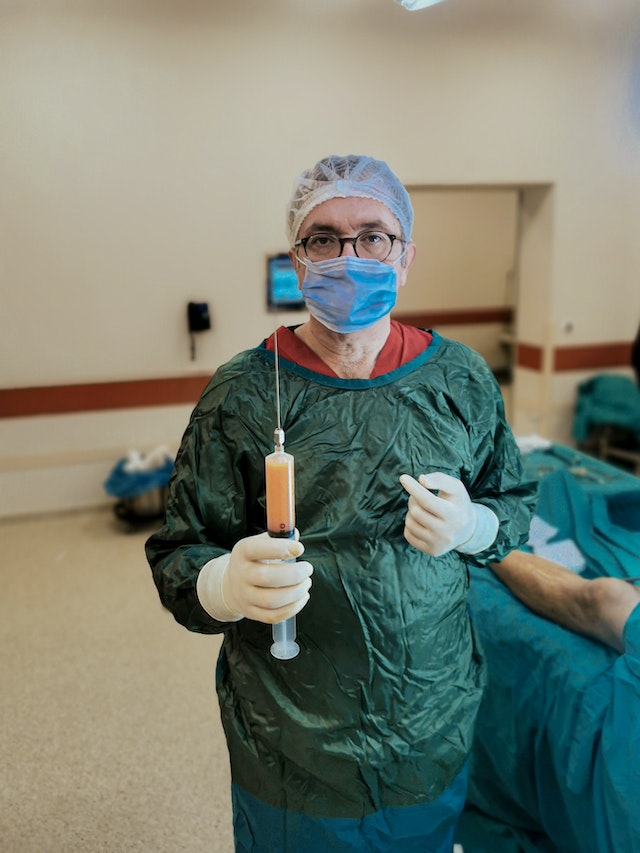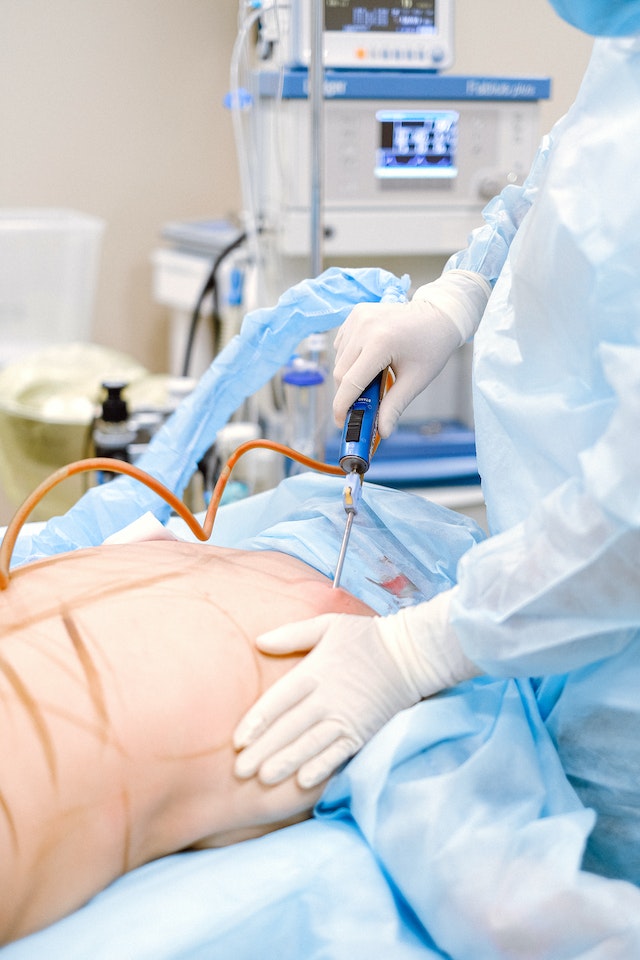Liposuction is a popular cosmetic surgery procedure that removes excess fat from various parts of the body. People who are struggling to lose weight or have stubborn fat deposits that do not respond to diet and exercise often turn to liposuction as a solution. However, many people are hesitant to undergo the procedure due to concerns about the cost.
The cost of liposuction varies depending on several factors, including the surgeon’s experience and reputation, the geographic location of the practice, the amount of fat to be removed, and the type of liposuction technique used. According to the American Society of Plastic Surgeons, the average cost of liposuction in 2020 was $3,548. However, this figure does not include additional expenses such as anesthesia, facility fees, and post-operative care.
Key Takeaways
- Liposuction is a cosmetic surgery procedure that removes excess fat from various parts of the body.
- The cost of liposuction varies depending on several factors, including the surgeon’s experience and reputation, the geographic location of the practice, the amount of fat to be removed, and the type of liposuction technique used.
- The average cost of liposuction in 2020 was $3,548, but additional expenses such as anesthesia, facility fees, and post-operative care should also be considered.
Understanding Liposuction
Liposuction is a surgical procedure that removes fat cells from specific areas of the body, such as the abdomen, hips, thighs, buttocks, chin, neck, upper arms, and back. It is a popular cosmetic procedure that can help contour the body and remove stubborn fat deposits that are resistant to diet and exercise.
There are several techniques used in liposuction, including suction-assisted liposuction, power-assisted liposuction (PAL), laser-assisted liposuction, and ultrasound-assisted liposuction. In all of these techniques, a thin tube called a cannula is inserted through small incisions in the skin to suction out the fat cells.
Liposuction is not a treatment for obesity or a substitute for a healthy lifestyle. It is important to have realistic expectations and understand that the results of liposuction are not permanent. The remaining fat cells in the treated area can still grow in size if a healthy diet and exercise routine are not maintained.
Like any surgical procedure, liposuction carries some risks, including bleeding, contour irregularities, internal puncture, seroma, fat embolism, and infection. It is important to discuss these risks with a qualified surgeon during a consultation.
Overall, liposuction can be an effective way to remove unwanted fat and improve body contour. It is important to choose a qualified and experienced surgeon, have realistic expectations, and maintain a healthy lifestyle to achieve the best results.
Choosing the Right Surgeon
When it comes to liposuction, choosing the right surgeon is crucial. A skilled and experienced surgeon can help ensure that the procedure is safe, effective, and produces the desired results. Here are a few things to keep in mind when selecting a surgeon:
Look for a Board-Certified Plastic Surgeon
It’s important to choose a surgeon who is board-certified in plastic surgery. This means that the surgeon has completed rigorous training and has passed exams that demonstrate their expertise in the field. Board certification also requires ongoing education and training to ensure that the surgeon stays up-to-date with the latest techniques and technologies.
Consider the Surgeon’s Experience
In addition to board certification, it’s important to consider the surgeon’s experience with liposuction. Ask how many procedures they have performed, and ask to see before-and-after photos of their work. A surgeon with a lot of experience in liposuction is more likely to be able to achieve the desired results with minimal risks and complications.
Check for Membership in Professional Organizations
Another thing to consider is whether the surgeon is a member of professional organizations such as the American Society of Plastic Surgeons. Membership in these organizations indicates that the surgeon is committed to staying up-to-date with the latest research and techniques in the field, and is dedicated to providing high-quality care to their patients.
Trust Your Instincts
Finally, it’s important to trust your instincts when choosing a surgeon. If something doesn’t feel right or if you don’t feel comfortable with a particular surgeon, it’s okay to look elsewhere. You want to choose a surgeon who you feel confident in and who listens to your concerns and goals for the procedure.
In summary, choosing the right surgeon is crucial for a safe and successful liposuction procedure. Look for a board-certified plastic surgeon with experience in liposuction, check for membership in professional organizations, and trust your instincts when selecting a surgeon.
Cost of Liposuction
Liposuction is a cosmetic surgical procedure that involves removing excess fat from various parts of the body. The cost of liposuction varies depending on several factors, such as the type of liposuction, the amount of fat to be removed, the surgeon’s experience, and the geographic location of the clinic.
The average cost of liposuction in the United States is around $3,500 to $7,500 per area, with prices ranging from $2,000 to $11,000 or more. However, it is essential to note that the cost of liposuction does not include other expenses such as anesthesia fees, hospital or facility fees, and other additional costs.
Anesthesia fees can range from $500 to $1,500, depending on the type of anesthesia used. Facility fees can range from $500 to $2,000 or more, depending on the clinic’s location and the type of facility used. These fees are usually not covered by health insurance, as liposuction is considered a cosmetic procedure.
It is also important to note that most insurance plans do not cover the cost of liposuction, as it is considered an elective cosmetic procedure. However, some insurance plans may cover the cost of liposuction if it is deemed medically necessary, such as for the treatment of lipomas or other medical conditions.
In summary, the cost of liposuction varies depending on several factors, including the type of liposuction, the amount of fat to be removed, the surgeon’s experience, and the geographic location of the clinic. Additional expenses such as anesthesia fees and facility fees should also be considered when calculating the total cost of liposuction. Insurance plans typically do not cover the cost of liposuction, except in cases where it is deemed medically necessary.
Preparation for Liposuction
Before undergoing liposuction, patients should prepare themselves both physically and mentally. Here are some important things to consider:
Medical Tests
Patients will need to undergo medical tests, such as blood work and a physical exam, to ensure they are healthy enough for the procedure. These tests will also help the surgeon determine if there are any underlying medical conditions that could affect the surgery or recovery.
Good Health
Patients should be in good overall health before undergoing liposuction. This includes being at a healthy weight, having a healthy diet, and getting regular exercise. Maintaining good health before the procedure can help improve the outcome and reduce the risk of complications.
BMI
Body mass index (BMI) is a measure of body fat based on height and weight. Patients with a high BMI may not be good candidates for liposuction, as the procedure is designed to remove small amounts of fat in specific areas. Patients with a BMI over 30 may be asked to lose weight before undergoing the procedure.
Diet
Patients should follow a healthy diet before and after liposuction to help promote healing and reduce the risk of complications. This may include avoiding certain foods, such as those high in sugar and fat, and increasing intake of fruits, vegetables, and lean proteins.
Exercise
Regular exercise can help improve the outcome of liposuction and reduce the risk of complications. Patients should aim to get at least 30 minutes of moderate exercise each day, such as walking or cycling.
Medical History
Patients should disclose their full medical history to their surgeon before undergoing liposuction. This includes any medications they are taking, past surgeries, and any medical conditions they have. This information can help the surgeon determine if the patient is a good candidate for the procedure and reduce the risk of complications.
Liposuction Procedure
Liposuction is a cosmetic procedure that aims to remove excess fat from specific areas of the body. The procedure is typically performed on the abdomen, hips, thighs, buttocks, arms, and back. Liposuction is often performed under local anesthesia, although general anesthesia may be used for larger areas or for patients who are particularly anxious.
Before the procedure, the surgeon will mark the areas to be treated and make small incisions in the skin. A small tube, called a cannula, is then inserted through the incisions and used to suction out the excess fat. The surgeon will use a back-and-forth motion to break up the fat cells and make them easier to remove.
The length of the procedure depends on the size and number of areas being treated. Most liposuction procedures take between one and three hours to complete. After the procedure, patients may experience some swelling, bruising, and discomfort, but these symptoms typically subside within a few days.
Liposuction is typically performed in an outpatient setting, which means that patients can go home the same day. However, in some cases, patients may need to stay overnight in the hospital for observation.
The cost of liposuction varies depending on a number of factors, including the size and number of areas being treated, the surgeon’s experience and expertise, and the location of the operating room facilities. Patients should be aware that liposuction is not covered by insurance, and they should be prepared to pay for the procedure out of pocket.
Post-Operative Care and Recovery
After undergoing liposuction, patients need to be aware of the post-operative care and recovery process to ensure a smooth and successful healing process. The following information provides a general overview of what to expect during the recovery period.
Pain and Medication
Patients may experience pain and discomfort after the procedure. Pain medication will be prescribed to help manage this discomfort. It is essential to follow the doctor’s instructions carefully when taking medication.
Swelling and Bruising
Swelling and bruising are common after liposuction. These symptoms may last for several weeks. Patients can help reduce swelling by wearing compression garments as directed by their doctor.
Compression Garments
Compression garments are an essential part of the recovery process. They help reduce swelling and provide support to the treated areas. Patients should wear compression garments as directed by their doctor.
Numbness
Numbness is a common side effect of liposuction. This symptom may last for several weeks or even months. Patients should be aware of this potential side effect and discuss any concerns with their doctor.
Infection
Infection is a rare but possible complication after liposuction. Patients should monitor their incision sites for signs of infection, such as redness, swelling, or discharge. If any of these symptoms occur, patients should contact their doctor immediately.
Recovery Time
Recovery time varies depending on the extent of the procedure and the patient’s overall health. Most patients can return to work and normal activities within a week or two. However, it may take several weeks or even months for the swelling and bruising to completely subside.
Irregularities
Irregularities, such as lumps or bumps, may occur after liposuction. These irregularities are usually minor and can be corrected with additional procedures if necessary.
Overall, liposuction is a safe and effective way to remove unwanted fat from the body. With proper post-operative care and recovery, patients can expect to see excellent results and enjoy a more contoured and toned appearance.
Insurance and Liposuction
When it comes to liposuction, insurance coverage can be a tricky subject. In general, liposuction is considered a cosmetic procedure, which means that insurance companies generally do not cover it. However, there are some situations in which insurance may cover liposuction.
In some cases, liposuction may be considered medically necessary. For example, if a person has a medical condition that causes excess fat deposits, such as lipodystrophy, insurance may cover liposuction as a treatment for that condition. Additionally, if a person has suffered a traumatic injury that has resulted in excess fat deposits, insurance may cover liposuction as a reconstructive procedure.
It is important to note that even if insurance does cover liposuction, there may still be out-of-pocket costs. Insurance may only cover a portion of the procedure, and the patient may be responsible for paying the remaining costs.
Overall, it is important for patients to thoroughly research their insurance coverage and speak with their insurance provider to determine if liposuction is covered under their policy. Patients should also speak with their plastic surgeon to determine if there are any other options for financing the procedure, such as payment plans or medical financing.
Liposuction in Specific Regions
Liposuction is a cosmetic surgical procedure that aims to remove excess fat from specific areas of the body. The cost of liposuction varies depending on the region of the body that is being targeted. In general, liposuction in larger areas or multiple areas tends to be more expensive than liposuction in smaller areas.
Body
Liposuction in the body area typically targets the abdomen, hips, and thighs. The cost of liposuction in these areas ranges from $4,000 to $10,000. The cost can be affected by factors such as the amount of fat to be removed, the surgeon’s experience, and the geographic location.
Butt
Liposuction in the buttocks area is often combined with a Brazilian Butt Lift (BBL). The cost of liposuction and BBL ranges from $8,000 to $15,000. The cost can vary depending on the amount of fat to be removed, the surgeon’s experience, and the geographic location.
California
In California, the cost of liposuction is typically higher than in other parts of the country. This is due to the higher cost of living and the higher demand for cosmetic procedures in the area. The cost of liposuction in California ranges from $5,000 to $15,000 depending on the region of the body and the surgeon’s experience.
Overall, liposuction is a safe and effective way to remove excess fat from specific areas of the body. It is important to consult with a board-certified plastic surgeon to determine the best approach for achieving the desired results.
Frequently Asked Questions
What is the average cost of liposuction in Dallas?
The average cost of liposuction in Dallas ranges from $3,000 to $10,000, depending on the area of the body being treated and the amount of fat being removed. However, it is important to note that the cost may vary based on the surgeon’s experience, the facility, and the type of liposuction procedure being performed.
How much does a 360 liposuction procedure cost?
The cost of a 360 liposuction procedure, also known as circumferential liposuction, varies based on the surgeon and the location. On average, this procedure can cost between $8,000 to $15,000. However, it is important to consult with a surgeon to receive a personalized quote based on your specific needs.
What is the recovery time for liposuction?
The recovery time for liposuction varies based on the individual and the extent of the procedure. Most patients can return to work within a few days to a week after the procedure, but it may take several weeks for the swelling and bruising to fully subside. It is important to follow post-operative instructions provided by the surgeon to ensure proper healing.
Is liposuction worth the investment?
Liposuction can be a worthwhile investment for individuals who are looking to remove stubborn fat that has not responded to diet and exercise. However, it is important to have realistic expectations and understand that liposuction is not a substitute for a healthy lifestyle. Additionally, the cost of liposuction should be weighed against the potential benefits and risks.
How much weight can you expect to lose with liposuction?
Liposuction is not a weight loss procedure. It is designed to remove small pockets of fat that have not responded to diet and exercise. The amount of fat removed during the procedure is typically less than 10 pounds, and weight loss results vary based on the individual and their lifestyle habits.
What is the typical duration of the results from liposuction?
The results of liposuction can be long-lasting if the individual maintains a healthy lifestyle. However, weight gain after the procedure can impact the results. It is important to maintain a healthy diet and exercise routine to ensure the best possible outcome.




